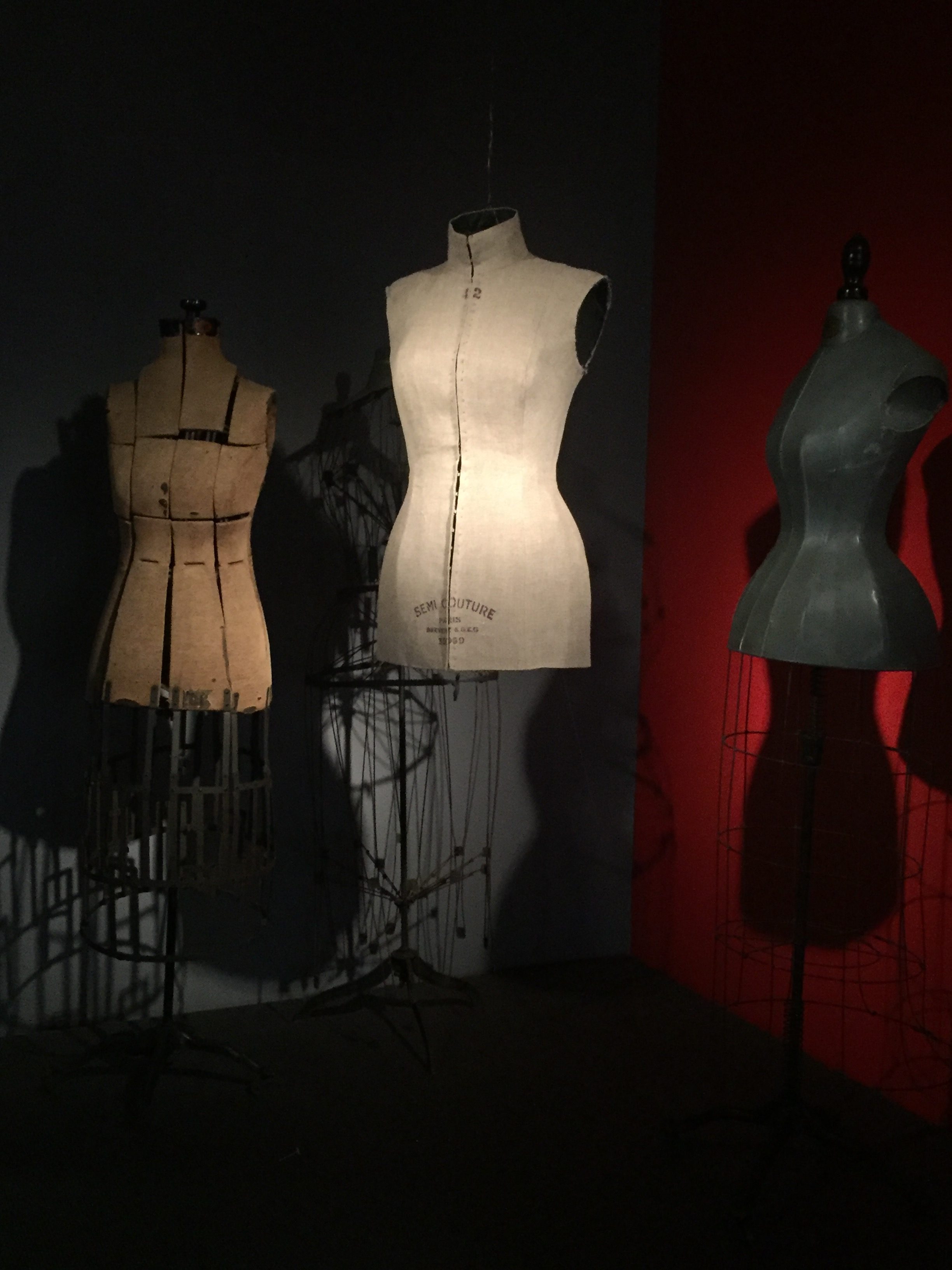The garment that I found the most interesting was Margiela’s dress form garment. This garment was what opened the exhibition, which I appreciated because it is a piece that sets the stage for the overall statement of the exhibition. The exhibition, “The Body: Fashion and Physique,” looks at the evolution of the relationship between the body and the form of dress. The fashion industry has seen the female form as malleable, and so clothes have been made to alter the body, or to create an illusion to flatter the body’s image. With the Margiela dress form garment specifically, Martin is commenting on how superficial the styles/trends of bodies change. I related to this garment with my own agency of age, specifically my age in relation to my body. Right now, I am lucky to have a body that is an “off-the-rack” size, and that I am able to feel good and look good in off-the-rack clothes. It is truly just luck that I have a body that conforms to our fashion system. When I was younger, in middle school, I hated my body because it was awkward and some parts were filled-out and others weren’t, so nothing ever fit right. I wanted to change my body so badly to be able to fit in clothes and to look good. For so long I thought I was the problem, but really the problem was that the fashion system creates a “standard” dress form size and expects everybody to conform to it.
The Margiela garment also got me thinking about the topic of “The Male Gaze” in Fashion and Cultural Studies by Susan Kaiser. She mentions how women are objects of display and men get to observe. We are never truly free of the gaze. Men look at women, and women look at themselves through the lens of being aware that they’re being looked at. It makes a woman, myself included, uncomfortably self conscious. I believe that the fashion system is part of problem, and that it caters to the male gaze. Women’s fashion does not put the comfort of the wearer at the forefront, and instead caters to the pleasure of the viewer. As Margiela’s dress form dress highlights, if the fashion industry views the woman’s body as something that can be altered and changed, then it is therefore objectifying the body. When an entire industry profits on the objectification of women, then men capitalize off of it too as they can further objectify us and see us as an entity who’s forefront purpose is to be aesthetically pleasing.

